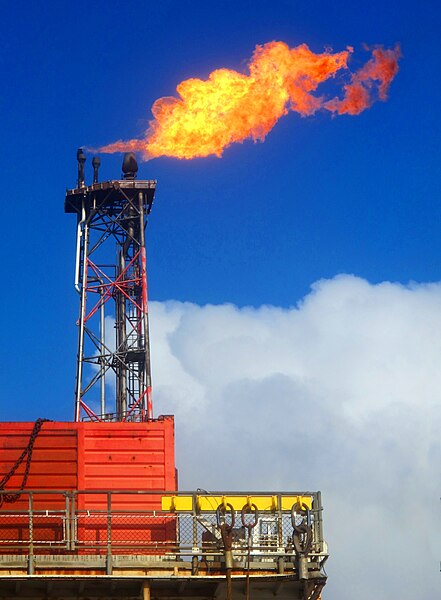 |
| Angeline M. Barrett is one of the CIRE staff on strike this week. In this article, she takes a closer look at how the USS pension is invested. |
This week, academic and some professional services staff at the University of Bristol will be on strike. The industrial action relates, amongst other demands, to the terms of our pension benefits and contributions. Bristol is the first UK University to declare a climate emergency and the School of Education has developed its own Climate Strategy. Yet, our pension fund, USS, holds substantial shares in the fossil fuel industry. Let us use the time on the picket lines to build a climate Ethics for USS campaign.
USS investments in fossil fuels
According to the USS 2019 annual report, 40.9% of the Pension fund’s £64.7 billion assets, what is known as its implemented portfolio, is invested in private equities (i.e. shares in private companies). Its website lists the top 100 equity investments (as of 31 March). Number one on the list is Royal Dutch Shell plc with equities valued at £538 million. Shell is the sixth largest extractor of fossil fuels in the world by volume. In total, I recognised eight of the listed companies as being in the business of exploration and extraction of fossil fuels:
- Royal Dutch Shell plc
- Glencore plc (coal mining)
- Lundin Petroleum
- Occidental Petroleum Corp.
- Pioneer Natural Resources Co.
- EOG Resources Co. (formerly part of Enron Oil and Gas)
- Petroleo Brasileiro SA (known as Petrobas)
- Lukoil PJSC ADR (A Russian multinational)
 |
| 1 Breakdown of USS Retirement Income Builder as of 31 March 2019 (USS 2019a) |
The Guardian recently ran a series of articles on the world’s largest corporate polluters. Shell and Petrobas both appear on the list of 20 firms, which between them have been calculated to have contributed to 35% of all energy-related carbon dioxide and methane in our atmosphere since 1965, according to research by the Climate Accountability Institute led by Heede (Taylor & Watts, 2019; Heede, 2019a). 1965 was taken as the start point because by then the oil giants already knew about that carbon emissions could lead to climate change (Bannerjee et al., 2016). When approached to respond to Heede’s research, Shell claimed:
“… we fully support the Paris agreement and the need for society to transition to a lower-carbon future. We have already invested billions of dollars in a range of low-carbon technologies, … . Addressing a challenge as big as climate change requires a truly collaborative, society-wide approach. We’re committed to playing our part, by addressing our own emissions and helping customers to reduce theirs.” (Taylor 2019).
Shell is investing in renewables. In 2018-19, it invested $1-$2billon on renewables, around 4-6% of its $25-$30bn annual investment (The Guardian, 2019). In this respect, the two European oil giants, Shell and BP are doing much more than US, Saudi, Russian and other oil companies (Watts, 2019). However, Shell is also planning to increase production of crude oil and gas by a colossal 38% between 2018 and 2030 (Watts, Ambrose and Vaugh 2019). Future plans include fracking for gas and oil in land belonging to the Mapuche indigenous people in the Neuquén province of Argentina (Bnamericas, 2019; The Guardian, 2019; Goñi, 2019). Local groups have complained about thousands of tonnes of toxic waste dumped on their land by Shell’s subcontractor, Treater Neuquén S.A. (Raine, 2019). Petrobas is not investing in renewables but claims that through the use of new carbon capture technologies, it can expand production with no change to its carbon footprint (Taylor 2019). Certainly, it is expanding production. This month it purchased exploration and production rights for two deep water oilfields off the coast of Argentina, opening the way for the world’s biggest expansion of offshore oil and gas exploration (Petrobas, 2019; The Guardian, 2019). Despite all the rhetoric around support for the Paris Climate Agreement, the rate at which oil and gas is pouring into global markets is accelerating not slowing. For Shell, Petrobas, Pioneer Natural Resources, EOG and Lukoil, exploration and exploitation of new oilfields is their main business activity.
Fossil fuel companies can present themselves as progressively green because of the way that responsibility for carbon emissions is accounted, including by the United Nations. Only the greenhouse gases produced in the process of extraction, refining and transportation are attributed to the oil companies. Like other fossil fuel companies, Shell and Petrobas accept no responsibility for the emissions produced when their customers burn the oil or gas they have extracted from the ground. By contrast, Heede’s research (2019a) attributes to the oil giants responsibility for all the carbon dioxide and methane associated with the gas and oil they extract, including that produced when it is burned by consumers.
It is disingenuous for Shell to point the finger at the rest of society. For decades the petroleum companies have spent millions on influencing public opinion and politicians. Shell is reported to be spending over £50 million per annum branding itself as a company that supports action against climate change (Laville, 2019a). A recently released report by Corporate Europe Observatory, Food & Water Europe, Friends of the Earth Europe and Greenpeace claims that Shell spent €35.6 million between 2010 and 2018 just on lobbying EU officials (Laville, 2019b). State-owned Petrobas’ entanglements with Brazilian politicians is even more problematic. The company has been embroiled in political corruption scandals, involving two Brazilian presidents, Lula and Rousseff, as well as a number of other high-level politicians (Chapman, 2018). Last year, Petrobas settled a lawsuit with investors in the US by agreeing to pay-outs of £2.2 billion as recompense for profits illegally siphoned off through bribes and kickbacks.
Investor influence
The current climate crisis demands immediate and drastic action. The Guardian’s environmental editor, Jonathon Watts (2019) points out that this will not come about through an accumulation of individual consumer decisions but requires turning off the flow of fossil fuels at source by phasing out extraction. The argument goes that as long as fossil fuels continue to flow into global markets, carbon-dependent industries will continue to grow. Whilst as individuals, we can and should change our behaviour, the burden of responsibility does need to shift towards the companies, which for fifty years have profited enormously from fossil fuels, whilst in full knowledge of the potential impact on climate. As Naomi Klein observed, naming another oil giant:
A lot of environmentalist discourse has been about erasing responsibility: “We’re all in this together… We’re all equally responsible.” Well, no – you, me and Exxon (Mobil) are not all in this together. The idea we’re all guilty is demobilising because it prevents us directing our anger at the institutions most responsible. (Forrest, 2014)
Yet, when it comes to Royal Dutch Shell, it appears that we are all in it together not just through consuming fossil fuel consumption but in benefiting from the profits. Investors play a key role in enabling their business and companies are under obligation to generate and to pay dividends to shareholders. Shell, therefore, can only make a dramatic change in direction in its longstanding business model with support from shareholders. USS is probably the largest pension fund in the UK, in terms of assets, so its corporate influence is substantial, particularly within UK. USS claims leadership within the sector in respect to its response to climate change. So, how is USS using its influence as a shareholder?
USS summarises its overarching strategy as:
Using our scale and expertise to deliver secure futures for our members, support for universities and being a force for positive change in the UK and broader economy. (USS, 2019a: 9)
In an article (Russell, 2018) on fossil fuel divestment, the Head of Responsible Investment, explains that due to its legal responsibilities, the first part of this strategy has to take precedence over the second. Delivering secure futures for us, its members, trumps positive change. USS, Russell explains, has a legal obligation to deliver on its primary objective of delivering dividends on their investments to meet the defined benefits for members. This we are told, rules out divesting for ethical reasons alone and requires the fund to maintain a “balanced portfolio” – presumably a balance between ethical and unethical investments. As an example of what this means in practice, Russell points to £800 million (1.2 % of its total assets) of renewable energy assets held by USS. USS has been proactive not only in securing but making it possible to hold these types of assets. It created and wholly owns as a subsidiary L1 Renewables, a platform from which it has loaned £500 million to fund renewable energy technology.
Investing in clean energy is just one half of the USS responsible investment strategy. The fund also seeks to use its stake in companies “to promote positive boardroom action on ESG [Environmental, Social and Governance] and ethical issues” (Russell, 2018). To exemplify this kind of action, this year’s annual report (USS 2019a) explains how USS collaborated with other pension funds to engage with Shell, leading to a commitment from the company to reduce carbon emissions by 50% by 2050. This is presumably a 50% cut in the roughly 10% of emissions that come from the extraction, refining and transportation of oil and gas; a gain for the planet that will be dwarfed by the increase in emissions at the point of consumption associated with Shell’s planned 35% increase in output by the much earlier date of 2030.
In another success story (USS, 2019b), we are told that a resolution they proposed to three UK-listed mining conglomerates (Glencore, Rio Tinto and Anglo-American) related to how they “were managing the transition to a 2 degree world”. These were, in each case, “supported by an overwhelmingly majority” of shareholders and board members. This exemplifies the risk management discourse, which typifies asset managers’ response to climate change:
As a long-term investor USS wants to be able to assess how companies are managing climate change and the risks it poses to their business. (USS, 2019b)
Risk management needs to be informed by data. So USS, also encourages companies to report on carbon emissions and their plans to respond to climate change.
What about us? What can we do?
USS’ climate change leadership represents a shift within but not a rejection of the neoliberal profit-led logic of capitalist global markets that has been key driver of climate crisis in the first place. The kind of logic that places the security of profits over ethics. The School of Education’s mission includes a commitment to promote social justice. The Centre for Comparative and International Research in Education is concerned with issues of social, environmental and epistemic justice in education. The part of the pension fund that is invested in the environmental destruction of Mapuche people’s land runs completely counter to the whole purpose and value-orientation of our professional work and research. The gains that USS and its collaborators have made in the Climate Agreement 100+ project arguably amount to little more than window-dressing, playing into Shell’s green-washing strategy. USS talks of managing the risk of ‘stranded assets’, but not the risks to lives and livelihoods associated with climate catastrophe. Stranding shale and deep-water reserves is precisely what we need to do fast. For humanity and the planet, they are not assets but threats to security. The prospect of a near future in which carbon emissions from fossil fuels increase by 35% is one to fill us with dread and foreboding. Certainly, not one on which to place a bet. What logic can there be to betting on a future in which we have no wish to live, or to bequeath to our children?
So as we are members of USS and the money they invest is ours, what can we do? If you earn over £55,000 or pay top-ups on your benefits you can unilaterally withdraw the defined contribution part of your pension from fossil fuels, tobacco, the arms trade, gambling and pornography. Just log into ‘My USS’ and select the ‘Ethical Lifestyle’ option from the ‘Do it for me’ section (Jennings 2018).
For the rest of us and the larger ‘defined benefit’ part of the pension, the only way to bring change is through collective action. USS has responded to such action in the past. The reason that USS is a national leader in responsible investment is because of the demands of its members. USS first adopted a responsible investment policy 20 years ago following a two-year Ethics for USS campaign, involving university staff and students (Fair Pensions n.d.). In 2014, it published a detailed response to recommendations of a report by ShareAction on Ethical Investment because UCU demanded a response. Another Ethics for USS campaign ran from 2014 to 2016, focused on divesting from companies with any involvement in banned weapons (ShareAction 2016). USS participates in global investor initiatives in IIGCC and the Climate Action 100+. It has a large in-house responsible investment team. USS communicates its actions on climate change through its website because it knows its members care deeply about such matters, although much of the information is frustratingly vague. Our Union is represented by three appointees on its (entirely white) 12-member, although one is currently suspended after asking awkward questions around deficit calculations (UCU, 2019).
With greater levels of awareness of climate change and following University of Bristol’s declaration of a climate emergency, here and now seems an apt point to launch another Ethics for USS campaign with a focus on climate. Industrial action brings us together in different ways that can build solidarity. One of UCU’s planned actions is participation in the climate strike on Friday 29 November. So, let us use the next week to join up the dots between pension investments and climate change. Let us build a collective campaign to demand a broader, deeper, more robust responsible investment strategy. Let us tell USS that we appreciate their efforts over the last five years to constructively engage with companies such as Shell and Glencore but they do not go far enough. Over the next five years, the urgency of climate change requires complete divestment from all companies that persist in expanding production of oil, gas and coal. Let us insist that USS engages more closely with its members to explain and be accountable for their investment choices. Let us insist that they engage with the expertise of research institutes such as Bristol’s Cabot Institute for the Environment. Let us through sustained collective campaigning attempt to break down the gulf in values between the investment sector, where unethical investments are justifiable, and the HE sector, where ethical scrutiny is unavoidable.
If anyone working for USS is reading this, what are your plans for Friday? Do pop down to a climate demonstration, it will be a great way to get to know us better.
References
Bannerjee, N., Cushman Jr., J.H., Hasemyer, D. and Song, L. (2016) CO2’s Role in Global Warming Has Been on the Oil Industry’s Radar Since the 1960s. Inside Climate News, 13 April 2016.
Bnamericas (2019) Neuquén and Shell review security in Sierras Blancas after shooting. Bnamericas, 11 June 2019.
Chapman, B. (2018) Petrobas agrees to pay $3bn to settle US lawsuit over corruption scandal. Independent, 3 January 2018.
FairPensions (n.d.) Our history.
Forrest, A. (2014) Naomi Klein: “A 3-day week will help to save life on Earth”. The Big Issue, 28 October 2014.
Goñi, U. (2019) Indigenous Mapuche pay high price for Argentina’s fracking dream. The Guardian, 14 October 2019.
Guardian, The (2019) What do we know about the top 20 global polluters? The Guardian, 9 October 2019.
Heede, R. (2019a) Carbon Majors: Update of Top Twenty companies 1965-2017. Press Release. Snowmass, Colorado: Climate Accountability Institute. 9 October 2019.
Jennings, N. (2018) Pensions: Invest in our future, not the past. Climate & Environment at Imperial, 3 September 2018.
Laville, S. (2019a) Top oil firms spending millions lobbying to block climate change policies, says report. The Guardian, 22 March 2019.
Laville, S. (2019b) Fossil fuel big five ‘spent €251m lobbying EU’ since 2010. The Guardian, 24 October 2019.
Petrobas (2019) We acquire Búzios and Itapu fields on the Transfer of Rights surplus bidding round. Petrobas, 6 November 2019.
Raine, J. (2019) Argentina: toxic waste from fracking in Patagonia. Latin American Bureau, 11 March 2019.
Russell, D. (2018) The Divestment Debate. London: University Superannuation Scheme.
ShareAction (2016) Ethics for USS. Campaign Briefing, November 2016.
Taylor, M. (2019) Climate emergency: what the oil, coal and gas giants say. The Guardian, 10 October 2019.
Taylor, M. & Watts, J. (2019) Revealed: the 20 firms behind a third of all carbon emissions. The Guardian, 9 October 2019.
UCU (2019) UCU comment on sacking of USS board member Jane Hutton. UCU news, 11 October 2019.
USS (2019a) Reports and accounts for year ended 31 March 2019. London: University Superannuation Scheme.
USS (2019b) Climate Change. London: University Superannuation Scheme.
Watts, J. (2019) Naming and shaming the polluters. The Guardian, Today in Focus Podcast. 18 October 2019.
Watts, J., Ambrose, J. and Vaughan, A. (2019) Oil firms to pour extra 7m barrels per day into markets, data shows. The Guardian, 10 October 2019.
———————
This blog was written by Dr. Angeline M. Barrett (angeline.barrett@bristol.ac.uk) from the University of Bristol School of Education. This blog was reposted with kind permission from CIRE. View the original blog.
 |
| Angeline Barrett |
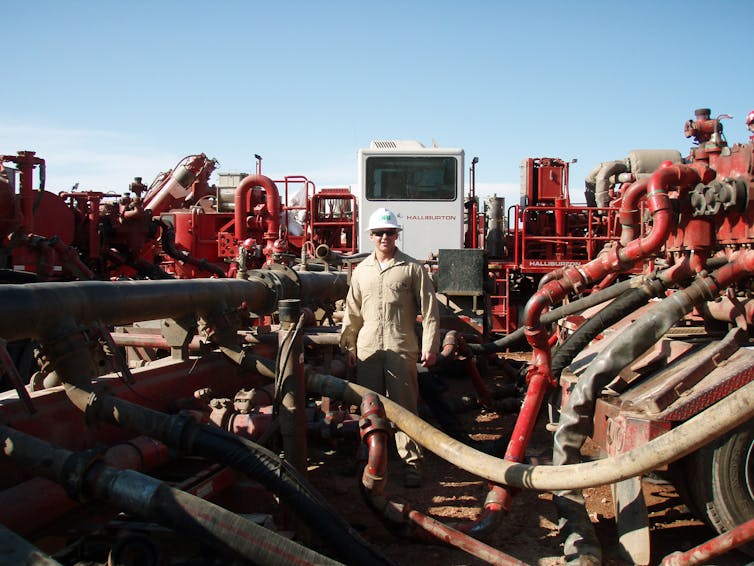
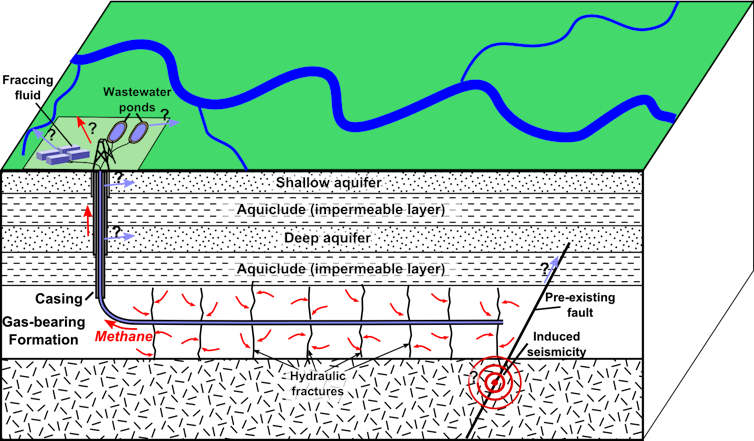
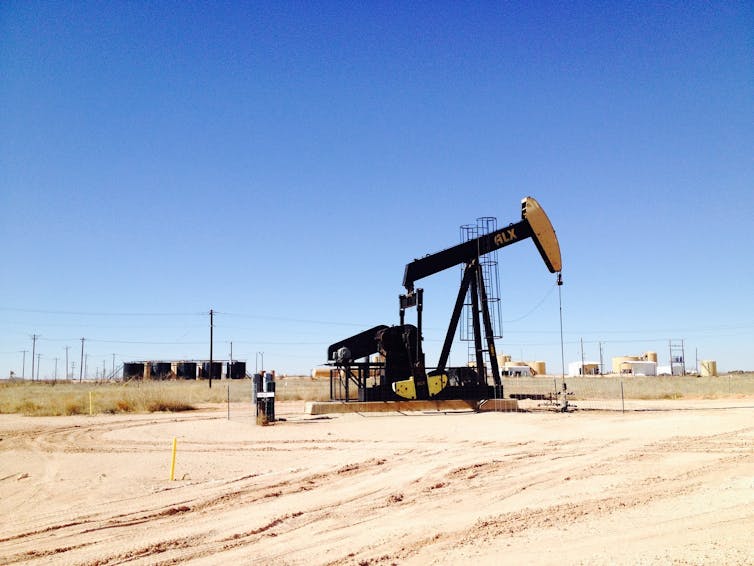
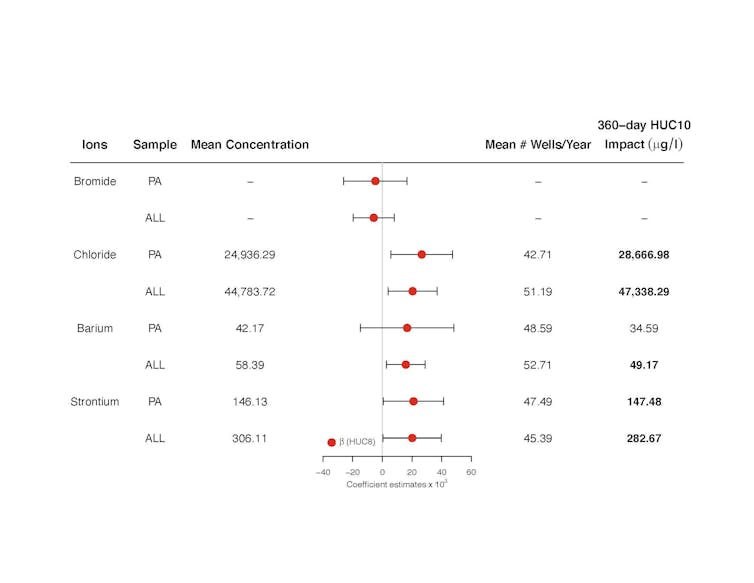
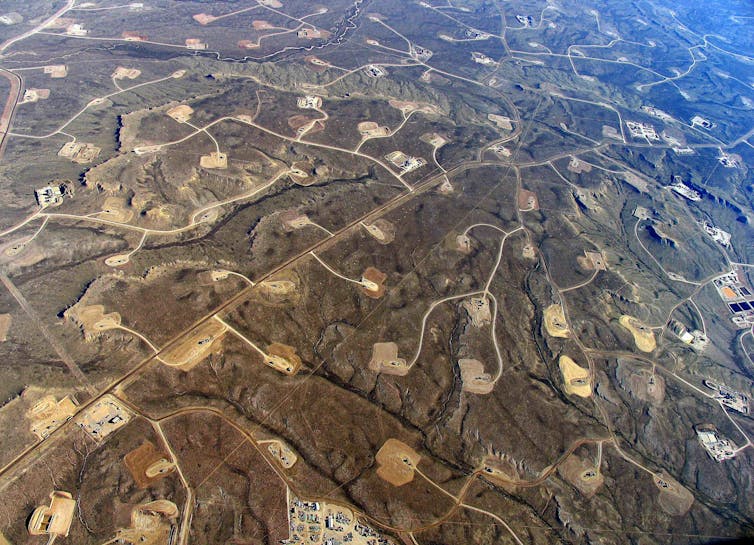
![]()









.jpg)

.jpg/800px-Gas_well_(5910119972).jpg)






